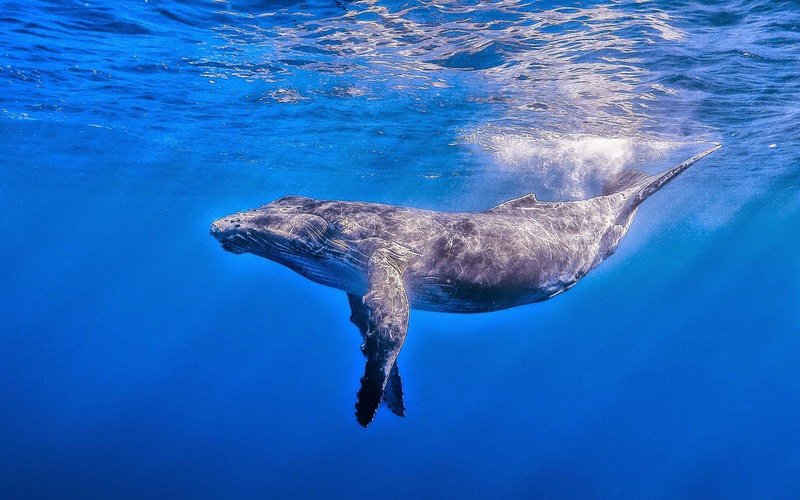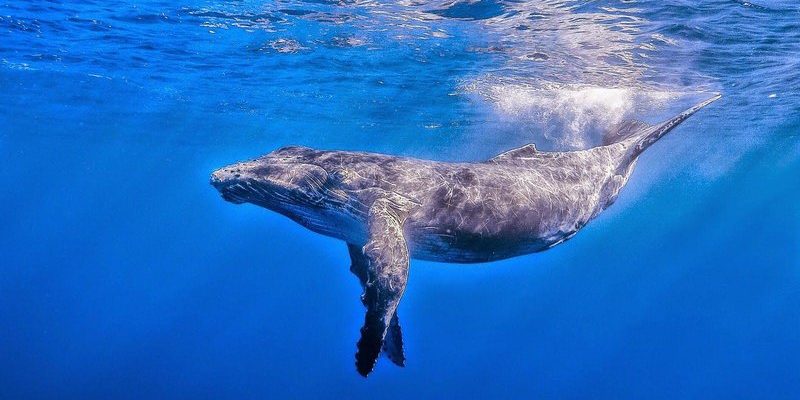
The blue whale is not just any marine creature; it holds the title for the largest animal known to have ever existed on Earth. Imagine a creature so massive that it outweighs even the largest dinosaurs! These gentle giants can reach lengths of up to 100 feet and can weigh as much as 200 tons or more. The sheer size of a blue whale is awe-inspiring, evoking a mixture of fear and admiration.
But there’s more to these magnificent beings than just their size. Blue whales are fascinating creatures that roam the oceans in search of food and companionship. They possess an intriguing life, communicating through low-frequency sounds that can travel vast distances underwater. It’s almost like they have their own invisible network connecting them with others of their kind—imagine sending a text message that travels hundreds of miles!
In this article, we’ll dive deep into understanding blue whales: their biology, behavior, habitat, and the vital role they play in our ecosystem. So grab a cup of your favorite brew and let’s embark on this underwater journey together!
Physical Characteristics
Blue whales are renowned for their enormous size, but let’s break it down further. Their bodies are sleek and elongated, adapting them for life in the open ocean. A full-grown blue whale can reach lengths of about 80 to 100 feet, which is roughly the length of three school buses lined up end to end. Even their hearts are massive—about the size of a small car! This incredible size makes them not just one of the largest animals but the largest to ever roam the planet.
Interestingly, the skin of a blue whale is a beautiful blue-gray color with lighter spots scattered throughout. This coloration can change slightly as they age, adding a unique touch to each individual. You might wonder, how do these majestic giants maintain their massive bodies? Their thick layer of blubber, which can be up to 12 inches thick, provides insulation against the cold ocean waters and serves as a source of energy during long migrations.
Although their size can be intimidating, blue whales are actually gentle creatures. They feed primarily on tiny shrimp-like animals called krill. During feeding season, a blue whale can consume up to 4 tons of krill a day! Imagine having a buffet that consists of millions of tiny crustaceans—it’s a feast fit for a giant!
Habitat and Range
Blue whales are found in all major oceans, from the Arctic to the Antarctic. They prefer deep, open waters and often migrate between feeding and breeding grounds. These migrations can span thousands of miles, making them one of the most widely traveled species in the ocean. They typically feed in nutrient-rich waters during the summer months, where krill populations thrive, and then head to warmer waters for breeding in the winter.
Understanding the habitat of blue whales is crucial for their conservation. They tend to favor areas where upwellings occur, bringing nutrient-rich waters to the surface. Unfortunately, these habitats can be affected by climate change and human activities, which may disrupt their feeding patterns. Protecting their habitat is essential not only for their survival but for the overall health of marine ecosystems.
Recently, researchers have also found that blue whales adapt their migration patterns based on changes in their environment. This ability to modify their behavior showcases their resilience but also highlights the importance of monitoring their habitats closely. Conservation efforts are vital to ensure they have the space and resources needed to thrive.
Feeding Behavior and Diet
The feeding habits of blue whales are as remarkable as their size. They primarily consume krill, using a technique called lunge feeding. This involves accelerating towards a swarm of krill with their mouths wide open, taking in vast amounts of water and prey. Once they close their mouths, they push the water out through their baleen plates, filtering out the krill to swallow. It’s like a giant vacuum cleaner sweeping up its food!
During the summer months, blue whales can often be seen diving deep into the ocean as they hunt for krill. They can hold their breath for about 15 to 20 minutes, diving as deep as 500 feet or more. When they resurface, they typically blow a fountain of water vapor that can be seen from miles away. This is not just impressive; it also serves as a reminder of their presence in the ocean and the ecosystems they inhabit.
Speaking of krill, it’s fascinating to note that blue whales consume such large quantities of these tiny creatures. They can eat anywhere from 2,000 to 4,000 pounds of krill a day, depending on the season and availability. The efficiency with which they can gather food is a testament to their evolutionary success as a filter feeder. This diet strategy plays a significant role in marine food webs, as the abundance of krill is closely tied to the health of marine environments.
Reproduction and Lifespan
When it comes to reproduction, blue whales are quite fascinating. Typically, females reach sexual maturity around 5 to 10 years of age, and after a gestation period of about 11 to 12 months, they give birth to a single calf, which can weigh up to 3 tons at birth! Imagine giving birth to something that’s already the size of a small car. Newborn blue whales are about 23 feet long and drink their mother’s rich milk to gain weight rapidly.
After giving birth, mothers are incredibly nurturing, often staying with their calves for several months. They teach them essential skills for survival, such as feeding and navigating their vast ocean environment. This strong maternal bond is critical for the calf’s development and eventual independence.
In terms of lifespan, blue whales are known to live long lives, with estimates ranging between 70 to 90 years, and some individuals potentially reaching over 100 years. Their long lifespan, combined with their slow rate of reproduction, means that their populations can take a long time to recover from threats, making conservation efforts even more crucial for their survival.
Threats and Conservation Efforts
Despite being magnificent creatures, blue whales face several threats in today’s world. One of the most significant challenges is ship strikes. Because they roam in open waters, collisions with large vessels can be fatal. Efforts are being made to raise awareness among shipping companies and implement measures to reduce the risk of these accidents.
Additionally, climate change poses a substantial threat to blue whales and their habitat. Changes in ocean temperature and acidity can affect krill populations, jeopardizing their food source. As their feeding grounds shift, blue whales may struggle to adapt. Addressing climate change is vital not only for blue whales but for the health of marine ecosystems at large.
Conservation organizations are actively working to protect blue whales through various initiatives, including the establishment of marine protected areas and regulations on commercial shipping routes. Awareness campaigns also aim to educate the public about the importance of these gentle giants and the need to conserve their habitats. By working together, we can ensure that blue whales continue to grace our oceans for generations to come!
Interesting Facts about Blue Whales
| Length: | 80-100 feet |
| Weight: | Up to 200 tons |
| Diet: | Primarily krill |
| Speed: | Up to 20 mph (32 kph) |
| Lifespan: | 70-90 years (some over 100 years) |
| Habitat: | All major oceans |
The blue whale is an astonishing creature that captures the imagination. From their colossal size to their intricate social behaviors, they represent the wonders of marine life. As we learn more about these gentle giants, it’s essential to recognize the importance of protecting them and their habitats. By doing our part, we can help ensure that future generations get to experience the beauty and majesty of blue whales swimming through our oceans.
FAQ
How much does a blue whale weigh?
A blue whale can weigh as much as 200 tons or more, making it the heaviest animal to have ever existed. To give you an idea of that weight, it’s like having over 30 elephants on one scale! This incredible mass is largely due to their thick layer of blubber, which helps insulate them in cold waters and provides energy during long migrations.
Where can blue whales be found?
Blue whales inhabit all major oceans, from the Arctic to the Antarctic. They prefer deep, open waters and can often be found in areas where nutrient-rich upwellings occur. Throughout the year, they migrate between feeding grounds—usually in cooler waters—and their breeding grounds in warmer waters. This migratory behavior allows them to take advantage of seasonal food availability.
What do blue whales eat?
The primary diet of blue whales consists of krill, tiny shrimp-like creatures abundant in nutrient-rich waters. During the feeding season, a single blue whale can consume between 2,000 to 4,000 pounds of krill each day! They filter feed by taking in large gulps of water and then expelling the water through their baleen plates, trapping the krill inside.
How long do blue whales live?
Blue whales have an impressive lifespan, typically ranging from 70 to 90 years. Some individuals have been known to live over 100 years. This long life span allows them to experience many seasonal migrations and build strong maternal bonds when raising their young.
Why are blue whales endangered?
Blue whales are classified as endangered due to several threats, including ship strikes, climate change, and habitat degradation. Their slow reproductive rate and long lifespan make recovery from threats challenging. Conservation efforts are crucial to ensuring their survival, which includes protecting critical habitats and reducing human impacts.
What is the biggest threat to blue whales?
The primary threats to blue whales include collisions with ships and changes in food availability due to climate change. Ship strikes can be deadly, and as krill populations fluctuate with changing ocean conditions, blue whales face challenges in finding food. Addressing these threats through conservation measures is vital for their survival.
How do blue whales communicate?
Blue whales communicate using low-frequency sounds that can travel vast distances underwater. These vocalizations play a crucial role in their social interactions, especially during mating or when navigating through oceans. It’s remarkable how they can communicate with one another over hundreds of miles, almost like having a smartphone network beneath the waves!
Can blue whales be seen in the wild?
Yes, blue whales can indeed be seen in the wild! Many tour operators offer whale-watching experiences during the appropriate seasons when these giants migrate. It’s a breathtaking experience to witness a blue whale swimming gracefully through the water, and it can become a memorable adventure for anyone lucky enough to spot one!
What is the role of blue whales in the ecosystem?
Blue whales play a vital role in marine ecosystems, primarily as filter feeders that help regulate krill populations. Their feeding habits support the health of the ocean’s food web. Additionally, when blue whales die, their massive bodies sink to the ocean floor, providing nutrients and habitat for various marine organisms, thus contributing to the overall health of ocean ecosystems.
Are blue whales solitary or social animals?
Blue whales tend to be solitary or found in small groups, but they can also gather in larger numbers in areas with abundant food sources. Social behaviors among blue whales include vocalizations for communication, particularly during mating seasons. While they may not be the most social of marine mammals, they do exhibit fascinating interactions with each other when the situation calls for it.
How can we help blue whales?
Helping blue whales involves supporting conservation efforts aimed at protecting their habitats and reducing human impacts. You can contribute by supporting organizations that work on marine conservation, advocating for policies that protect ocean health, and raising awareness about the importance of these magnificent creatures and the ecosystems they inhabit.

